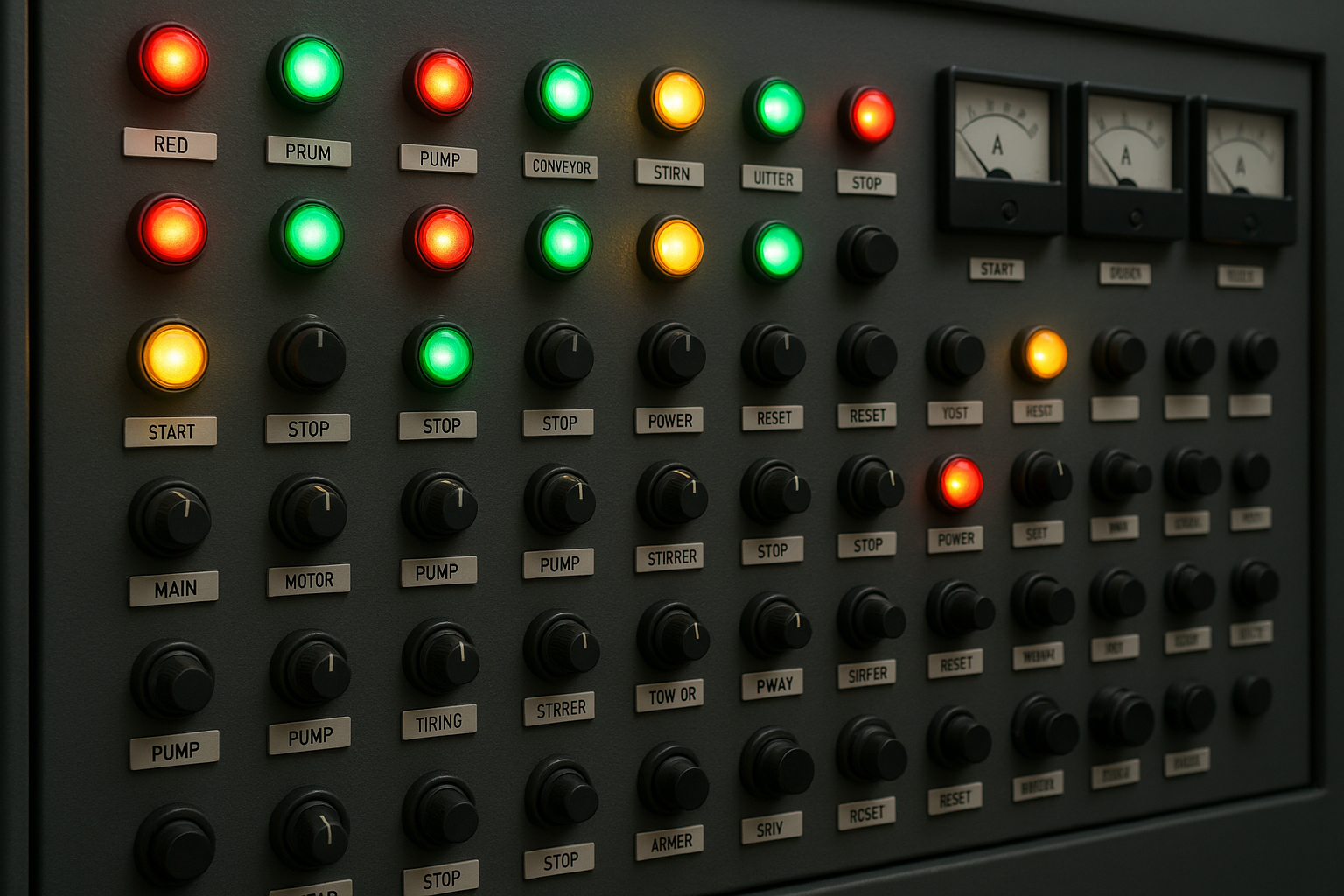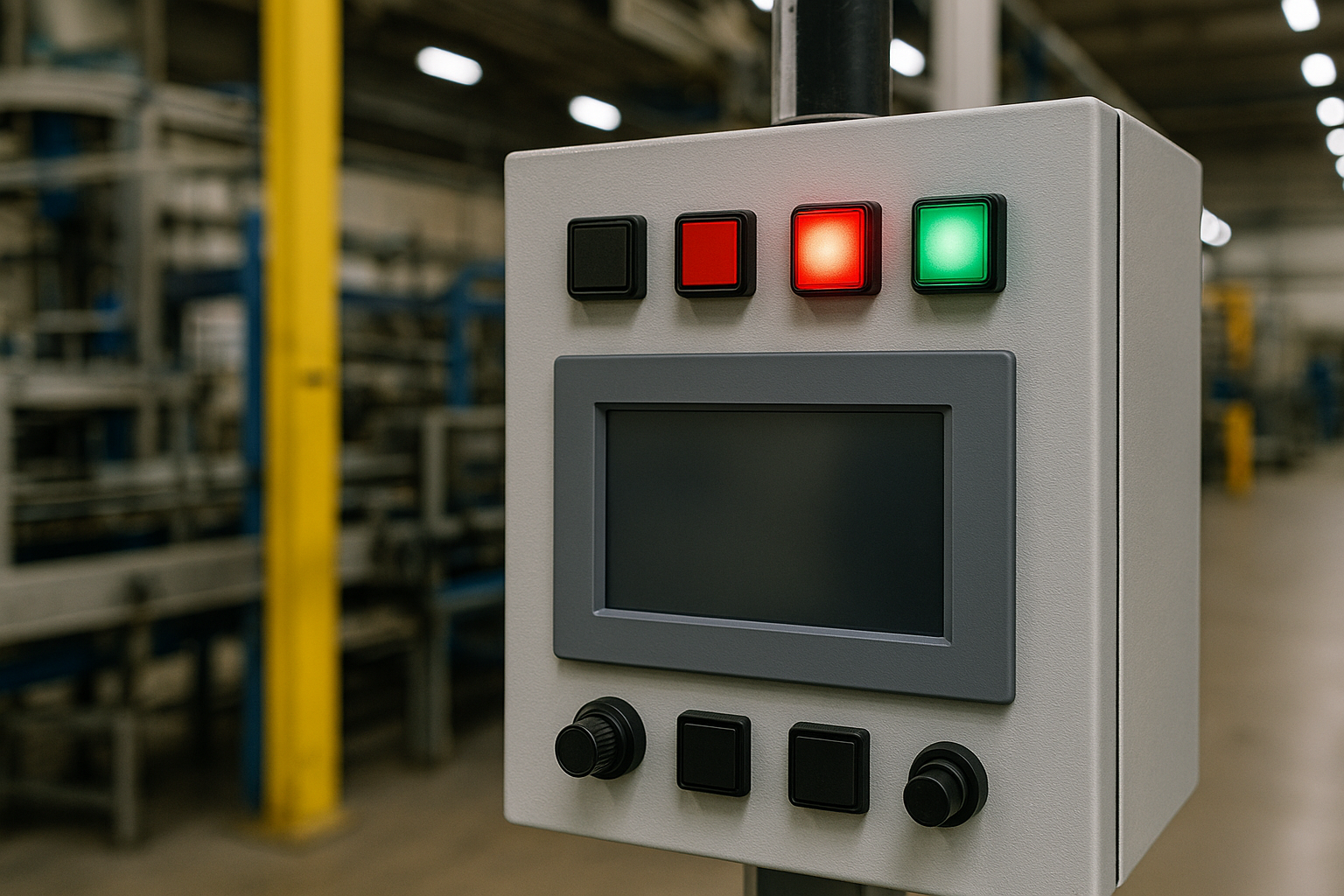
Introduction
In modern industrial settings, Human-Machine Interfaces (HMIs) are much more than control panels—they’re the bridge between operators and increasingly complex automated systems. As automation expands into more challenging environments like chemical plants, foundries, energy infrastructure, and transit hubs, the reliability of these HMIs becomes essential for safety, uptime, and compliance.
In many cases, the HMI is the first component exposed to environmental stress—and often the first to fail. For OEMs and systems engineers, building robust HMI assemblies means going beyond basic functionality. These interfaces must withstand vibration, chemicals, moisture, electromagnetic interference (EMI), and extreme temperatures.
This guide shares best practices—drawn from real-world experience—for engineering HMI systems that deliver long-term performance and reliability in the toughest industrial conditions.
How do we Engineer for Industrial Realities?
Harsh environments test every component of an HMI. From dust and oil to shock and EMI, systems must be built to survive:
● Dust, oil, or moisture ingress
● Vibration and impact from heavy machinery
● Exposure to cleaning agents or corrosive chemicals
● UV exposure and thermal cycling
● Electromagnetic interference from industrial equipment
Using the right materials—such as stainless steel, polycarbonate, or reinforced thermoplastics—helps maintain structural integrity and enclosure seals, which are critical to IP and NEMA compliance.
What are the 3 Key Priorities for Durable HMI Assemblies?
1. Component Reliability: Switches, LEDs & Indicators
Tactile components, such as pushbuttons and toggles, are heavily used and prone to wear. Failure here leads to costly downtime and safety risks.
● Select switches rated for high cycle counts and harsh environments.
● Utilize LED indicators that provide high visibility, low power consumption, and protection against shock, vibration, and electromagnetic interference (EMI).
Tip: Look for components rated IP67 or higher, with UV-stable housings and bright, color-coded illumination for clear status visibility.
2. Operator Usability & Ergonomic Design
In environments where operators wear gloves or personal protective equipment (PPE), intuitive design is crucial. Prioritize:
● Adequate spacing for gloved hands
● Tactile feedback from switches
● LED backlighting for low-light areas
● Color-coded elements aligned with safety standards like IEC 60204-1 (Safety of machinery - Electrical equipment of machines - Part 1: General requirements)
Modular HMI layouts and smart backlighting enhance usability and expedite operator response—especially in high-pressure environments such as oil rigs or water treatment facilities.
3. Environmental Protection & Sealing
A reliable seal is the frontline defense in protecting HMI electronics. Look for:
● Overmolded gaskets or elastomer boots
● Sealed wiring paths and cable entries
● Pressure-equalization vents to prevent condensation
● Chemical-resistant seals, such as fluorosilicone
VCC’s sealing technologies provide both protection and clarity, especially in areas prone to mist, dust, or chemical exposure.

Real-World Applications: Lessons from the Field
Water Treatment Facilities
Switches in older panels failed due to moisture and buildup. Upgrading to sealed VCC components reduced maintenance by 95% and improved alert visibility.
Transportation & Rail Infrastructure
In systems prone to EMI and vibration, VCC’s shielded LED modules maintained performance—ensuring signal accuracy and reducing the risk of accidental activation.
Beyond Compliance: Testing for Real-World Reliability
Meeting standards like UL, CE, and IEC is just the baseline. VCC goes further by conducting:
● Accelerated life testing (HALT/HASS)
Proactive Failure Identification and Robustness Enhancement.
These are specialized reliability tests engineered to push products beyond their specified operational limits to rapidly uncover design and manufacturing weaknesses. These methodologies are fundamental for improving product robustness and ensuring consistent quality throughout the product lifecycle.
● Salt fog and condensation cycling
Assessing Corrosion Resistance in Challenging Climates.
HMI assemblies deployed in industrial environments, particularly those exposed to moisture, chemicals, or marine/coastal conditions, are highly susceptible to corrosion. Salt fog and cyclic corrosion testing are critical for evaluating a material's resistance to such degradation, ensuring the long-term integrity of the HMI.
● EMI/ESD simulations
Safeguarding Electronics from Electromagnetic Interference and Static Discharge.
Electronic components within HMI assemblies are highly susceptible to Electromagnetic Interference (EMI) and Electrostatic Discharge (ESD), both of which can lead to malfunction, data corruption, or permanent damage. In electrically noisy industrial environments, EMI/ESD simulations are crucial for ensuring the immunity and reliable operation of HMIs.
● Mechanical fatigue testing
Predicting Lifespan and Preventing Structural Failure.
Mechanical fatigue testing is meticulously designed to span the range of cyclic stresses a material might experience once it is manufactured into a given component.
These rigorous tests uncover potential failures before deployment, reducing field service calls and warranty issues.
Q&A
Q1. What causes most HMI failures?
Moisture ingress, weak sealing, mechanical shock, and EMI are the top causes of premature failure.
Q2. How do I ensure reliability in HMI components?
Look for components with proven IP ratings, mechanical cycle data, and certifications (UL, CE, RoHS). Ask for case studies or field-tested examples.
Q3. Can rugged HMIs still look modern?
Yes—modern rugged designs offer sleek profiles, flush mounting, and integrated lighting while meeting industrial protection ratings.
Q4. How long do LED indicators last?
High-quality LED indicators often last over 100,000 hours—10 times longer than traditional bulbs.
Q5. Is modular design better for industrial panels?
Absolutely. Modular assemblies simplify upgrades, isolate faults, and support rapid maintenance.
Smarter HMI Panels Start with Smarter Design
A high-performance HMI panel blends robust materials, ergonomic layout, and rigorous testing. In critical industries, failure isn’t just inconvenient—it’s a liability.
At VCC, we work closely with OEMs and integrators to deliver custom, industrial-grade HMI solutions ready for today’s most demanding environments.






